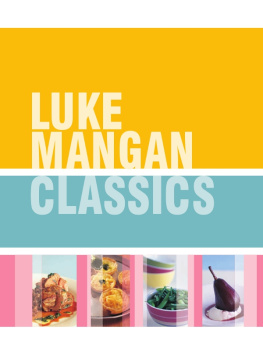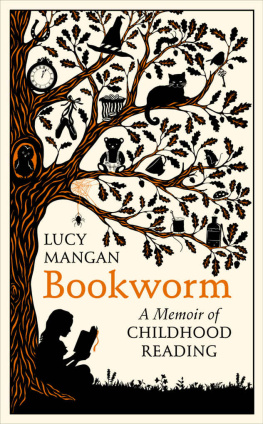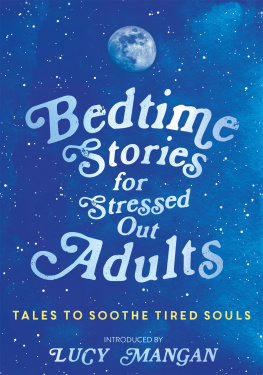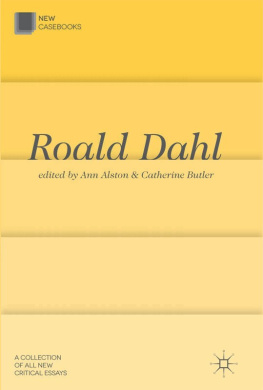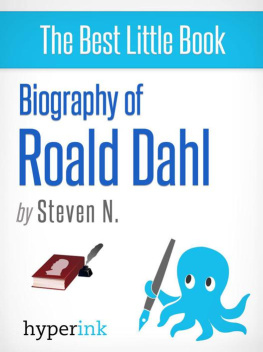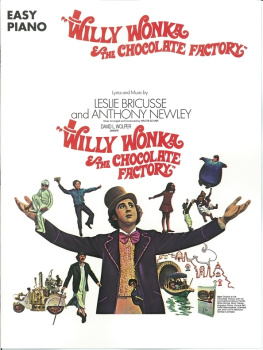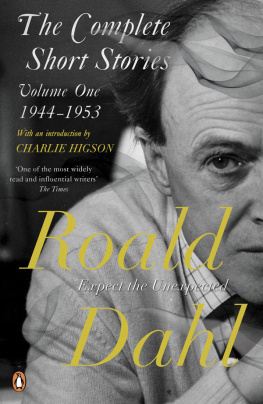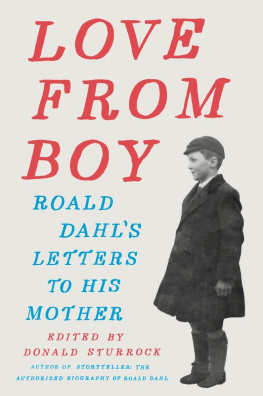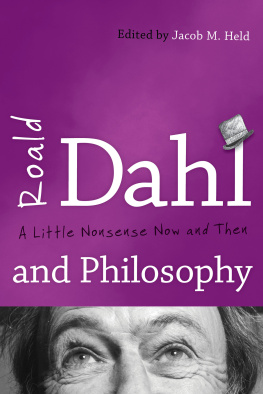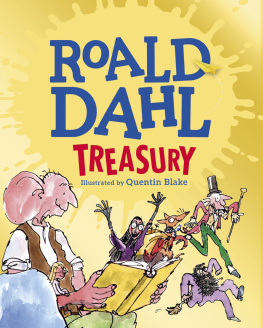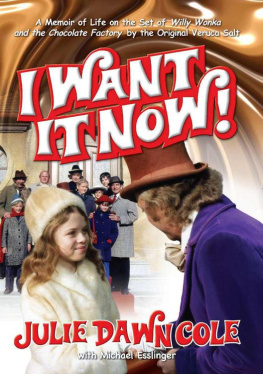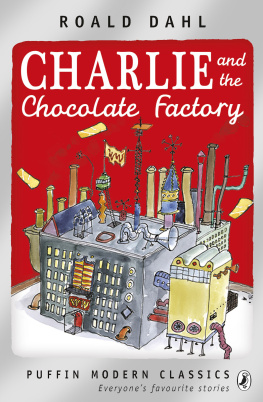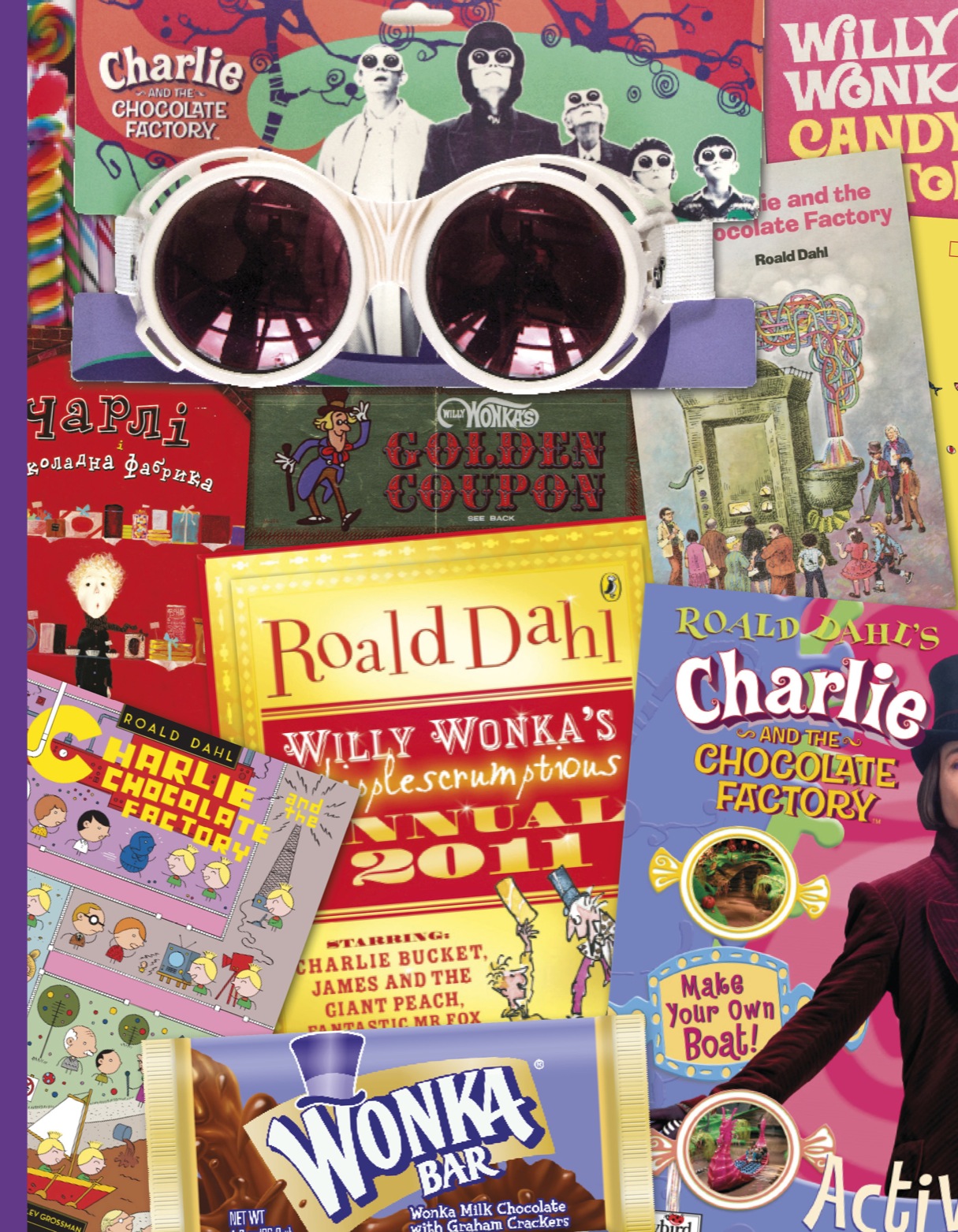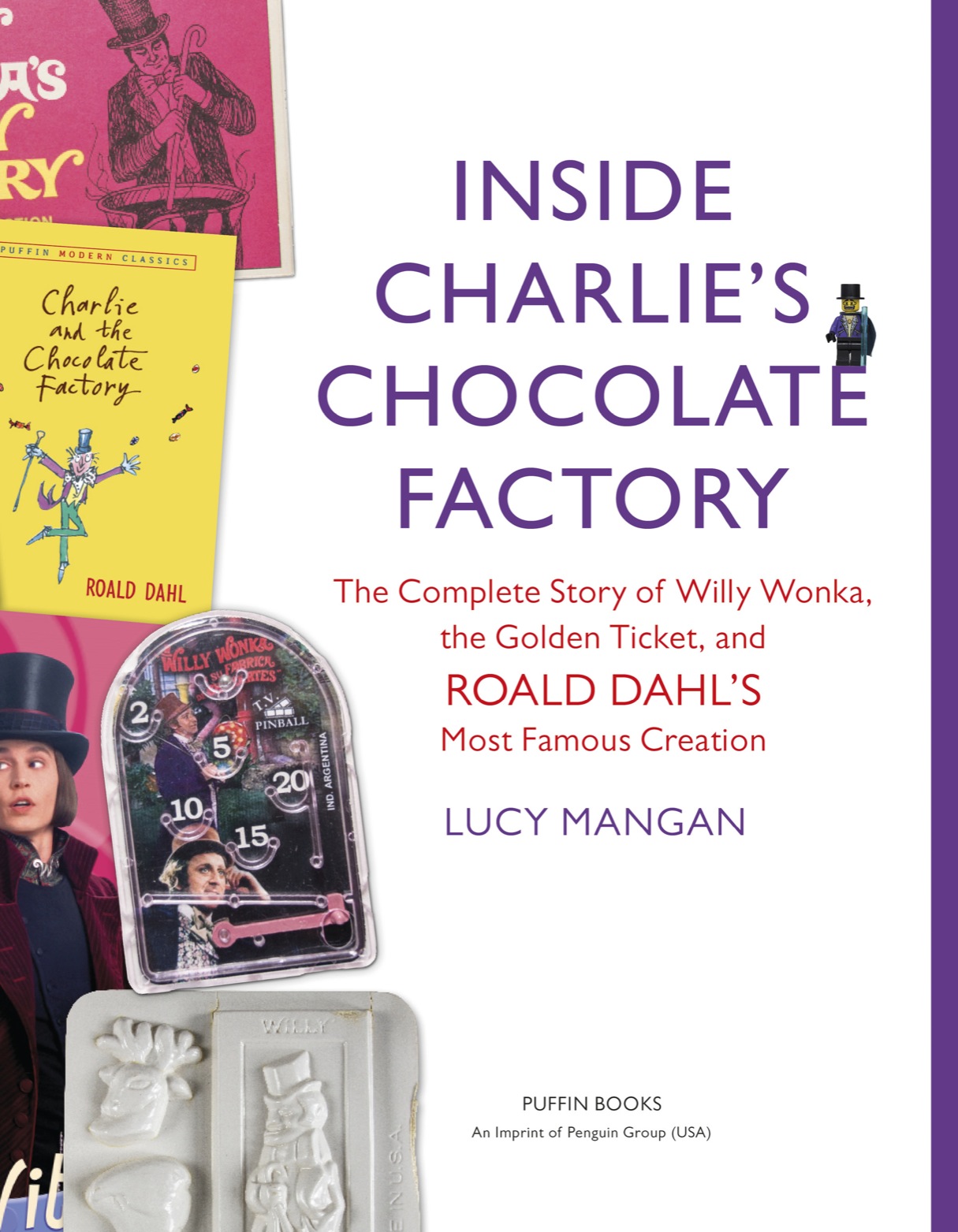PUFFIN BOOKS
Published by the Penguin Group
Penguin Group (USA) LLC
375 Hudson Street
New York, New York 10014

USA | Canada | UK | Ireland | Australia
New Zealand | India | South Africa | China
penguin.com
A Penguin Random House Company
Published simultaneously in Great Britain by Penguin Books and in the United States by Puffin Books, an imprint of Penguin Young Readers Group, 2014
Original text copyright 2014 by Lucy Mangan
Copyright 2014 Roald Dahl Nominee Limited
Foreword copyright 2014 by Sophie Dahl
Elements from the motion pictures Willy Wonka and the Chocolate Factory ( 1971 ) and Charlie and the Chocolate Factory ( 2005 ) used courtesy of Warner Bros. Entertainment Inc. All elements are and copyright Warner Bros. Entertainment Inc. Certain photographs and other materials in this book were licensed by Warner Bros. Entertainment Inc. However, Warner Bros. is not the author or publisher of this book and the views and information presented herein are the work of the books author and not Warner Bros.
Any third-party use of material from this book, outside this publication, is prohibited.
Interested parties must apply directly to the copyright holders for permission.
Photograph credits appear on pp. 20810 .
Every effort has been made to trace copyright holders and to obtain their permission for the use of copyright material. The publisher apologizes for any errors or omissions and would be grateful if notified of any corrections that should be incorporated in future reprints or editions of this book.
Penguin supports copyright. Copyright fuels creativity, encourages diverse voices, promotes free speech, and creates a vibrant culture. Thank you for buying an authorized edition of this book and for complying with copyright laws by not reproducing, scanning, or distributing any part of it in any form without permission. You are supporting writers and allowing Penguin to continue to publish books for every reader.
LIBRARY OF CONGRE SS CATALOGING - IN - PUB LICATION DATA
Mangan, Lucy.
Inside Charlies Chocolate Factory : the Complete Story of Willy Wonka, the Golden Ticket, and Roald Dahls Most Famous Creation / by Lucy Mangan.
p. cm.
Includes bibliographical references and index.
ISBN 978-0-698-16394-2
[1. Dahl, Roald. Charlie and the Chocolate FactoryJuvenile literature. 2. Dahl, RoaldFilm and video adaptationsJuvenile literature. 3. Childrens stories, EnglishHistory and criticismJuvenile literature.] I. Title.
PR6054.A35Z737 2014
823.914dc23
2014007560
Picture research by Raffaella Morini
Version_1
THE RED CHOCOLATE BOX
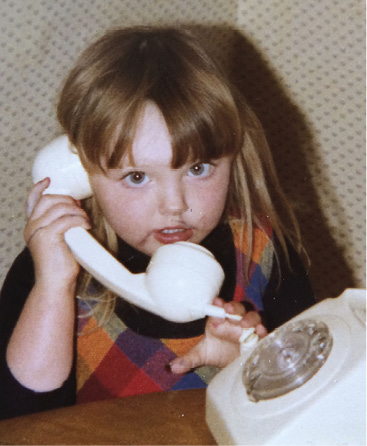
Sophie Dahl, aged three.
I called him Mold, because when I was a toddler my baby tongue couldnt get to grips with the Norwegian pronunciation of his name, Roo-al (regal, long stretched Roo, al like the end of mall, silent D), and instead Mold he was, ever after.
At his table, I was raised on a steady diet of good food and enchantment. A meal was never just a meal; it was a recipe from a prince in Dar es Salaam, rescued from the jaws of a hungry python at the crucial moment by my grandfather. In this story, and its variants, Mold was always the blue-eyed interloper, diverting the disasters he stumbled upon. So grateful was the fictitious prince, he gave the lanky Englishman his treasured recipe for crab-stuffed baked potatoes. (Or toast with bacon and marmalade, or whatever else happened to be on the menu in rainy Buckinghamshire that day.)
He had many accoutrements of magic, Mold, like a proper magician should: amaretto biscuits whose wrapping paper you lit, which shot up into the sky like titchy hot-air balloons, falling back to earth in a wispy question mark of ash; a miniature steam train that huffed and puffed round the dining room table; a house dotted with Witch Balls, ancient, mirrored spheres that hung from a window, confronting any witch so bold as to come knocking with her own hideous reflection so shed flee. Mold was famous among his children, and later on me, for writing our names in the grass with weed killer, while we slept.
The fairies have been, hed say over breakfast, in a voice that crackled and sparked, like the beginnings of a bonfire.
There was nothing more magical, though, than the Red Tupperware Box that appeared at the end of a meal, heralding the most important and longed-for bit.
The Red Tupperware was a medium-sized, rectangular box of function. The box itself was almost irrelevant, and it could have been blue, green or see-through. Its postbox redness, though, lent an air of jaunty dissolution to the proceedings and ultimately became part of its own myth.
If you had been good at lunch or dinner, not too much of a bore, eaten things proffered without a fuss, you could collect the fabled box from its home in the kitchen and bring it to the table, while the grown-ups were having their coffee.
The Red Box contained chocolate. Lots of chocolate, in child-sized appealing bars, nothing fancy, but always compelling. And it was here, over this staunch bit of plastic, that Mold and I did a great deal of communing.
We both LOVED chocolate. Our taste in the stuff was similar. Cadburys Flake, Aero, Curly Wurly, Crunchie, KitKat and the Dime bar, a Scandinavian crunchy concoction that Mold delivered to me with great ceremony after a book tour in Sweden. Maltesers, Rolo, Fruit and Nut; a mutual horror of the Creme Egg. We were partners in a quest for the ultimate bite (light, airy, possibly featuring almonds). His knowledge of chocolate was encyclopedic. He could recall specific dates and years of invention with the glee of a patriotic child recalling the kings and queens of his country. Even his Jack Russell, Chopper, ate chocolate (four Smarties, served after lunch and dinner, daily).
Mold grew up fatherless in Wales, in an era before chocolate was readily available. Sweet shops peppered his boyhood and boyhood writing: lemon sherbets, bootlaces, gobstoppers and toffees, hard-boiled sweets served by boot-faced proprietors. Chocolate was later: the stuff of dreams, exotic and faraway.
And so, for the grown-up Mold, Willy Wonka and his factory were to embody the chocolate dream, Charlie Bucket to play the moral compass beating at its heart. Charlie and the Chocolate Factory was written fifty years ago, but it remains utterly timeless and infused with a child-like magic that only a landscape of chocolate rivers and everlasting gobstoppers can conjure. For each and every one of us, there remains a powerful, Proustian memory of that first-ever something sweet, and, for so many of us, that was made flesh by the story of Charlie Bucket and his Golden Ticket.


